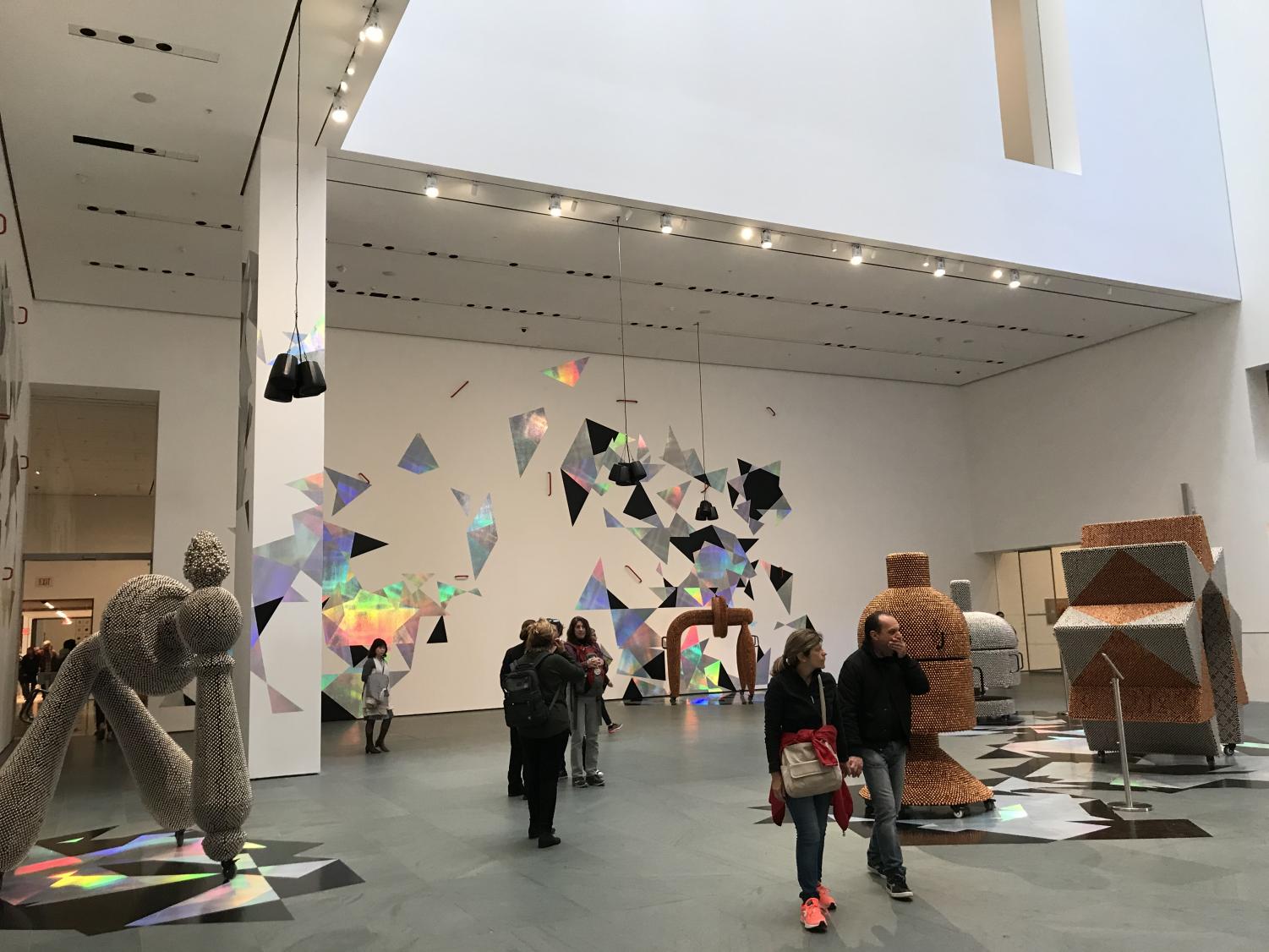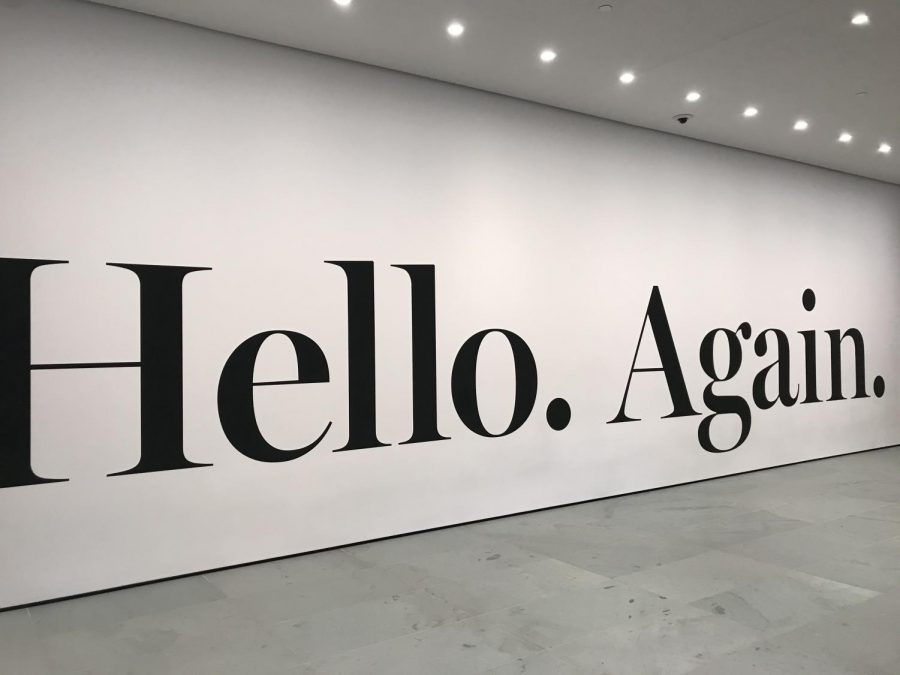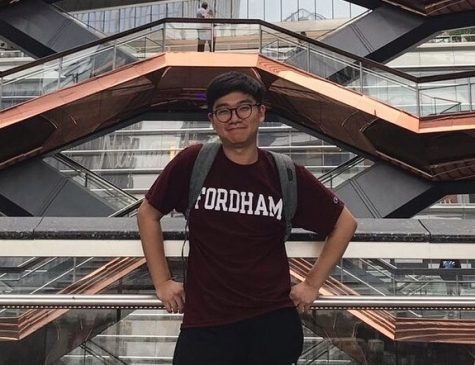The Month of MoMA: Art Museum Opens Anew
ISABELLA SOTTILE/THE OBSERVER
The MoMA’s $450 million dollar renovation has brought new, interdisciplinary spaces for viewers to interact with artwork and experience it in new ways.
November 6, 2019
MoMA Reimagined
By ISABELLA SOTTILE
Contributing Writer
On Oct. 21, the Museum of Modern Art (MoMA) officially reopened its doors to the public after the completion of a major renovation and expansion project that began in 2016. The museum has been closed to the public since June 2019 while the final pieces of the $450 million expansion were put into place. In collaboration with architects Diller Scofidio + Renfro and Gensler, about 47,000 square feet were added to the museum to allow 30% more gallery space.
The reimagined MoMA offers interdisciplinary gallery spaces invented to bring different media together for a new perspective on the artwork. Free ground-level galleries open to the public bring art to the streets of midtown Manhattan, a Creativity Lab offers visitors the opportunity to engage with and discuss the art and a central multi-purpose performance space named the Marie-Josée and Henry Kravis Studio will host a variety of performance exhibitions.
MoMA’s Director of Real Estate Expansion and master orchestrator of the project Jean Savitsky detailed the process of these monumental renovations and the purpose behind the design during a tour through the new museum.
With regard to the additional constructions, Savitsky said, “We were threading together different decades of architecture on the exterior. But the interior experience is seamless as you flow from building to building, with only a subtle shift in architecture.”

As visitors enter the museum through the large lobby, they are met with art installations immediately. One of Savitsky’s colleagues pointed out that the lobby “evokes the feeling of a busy public square, not a hectic subway stop.”
The walk through the galleries feels fluid and easy, not like the typical monotonous museum march so often feared in the trek through museums with large collections — each room is inviting, accessible and full of fascinating artwork. Large windows dispersed intermittently throughout the galleries connect visitors with the outdoors as they view the art displayed in new and creative ways. Within the rooms, MoMA combines various media rather than separating painting from sculpture and photography.
The performance space is front and center, unlike many museum layouts which hide such a space away. Savitksy said that this feature, unique to the museum, is “designed to be an integral part of the journey through the galleries because they wanted to emphasize the importance of performance in their space.”
In addition, MoMA has consciously worked towards representing more diverse artists in their exhibitions. On display now, “Betye Saar: The Legends of Black Girl’s Window” is a collection of autobiographical prints which draw on themes of family, history and mysticism in Saar’s art and her earliest work in printmaking. Another exhibit, “Member: Pope.L, 1978-2001” displays a collection of Pope’s public performances which raise questions “about a culture consumed with success yet riven by social, racial, and economic conflict.” The debut of the reinvented MoMA offers 10 provocative exhibitions in addition to the permanent collections.
Student admission is $14 with a valid full-time student ID, but the museum currently offers free admission on Friday evenings from 5:30-9 p.m. in a sponsored partnership UNIQLO. More information regarding admission and the exhibits can be found on the MOMA website.
A Look Inside: The Marie-Josée and Henry Kravis Studio
By DANIEL HUR
Staff Writer
For the last four months, MoMA closed and underwent extensive renovations with new pieces and exhibits of artwork and restructuring the architecture of the building itself. On Oct. 21, it reopened to the public with a new addition: the Marie-Josée and Henry Kravis Studio, a new exhibit space for live events “dedicated to performance, music sound, spoken word, and expanded approaches to the moving image,” according to the official MoMA website.
Open to visitors to engage the art with their senses, the Studio enables them to be truly aware of what art can do as it comes alive through performances by artists who helped make it. Being a part of this experience is truly a new approach to what art can mean for people. The Studio connects visitors with artwork made up of everyday objects, bringing new perspectives of how “modern” art can be.

The experience of viewing the artwork in the Studio is coupled with hearing sound associated with it by way of speakers throughout the space.
Centered at the heart of the museum on the fourth floor within the collection galleries, the studio is a new space for the MoMA to display its collection as a living history for established and emerging artists. The Studio allows you to see objects and hear sounds from speakers connected to each piece of artwork, like banging on a wooden wall or sounds of metal chains hitting against each other softly.
Designed to create an open experience, the Studio is surrounded by a double-height glass wall with a view of 53rd Street. On the other side of the small space, an overlook from the fifth-floor collection galleries brings light into the room.
The walls of the Studio are shiny and black, and the lights on the ceiling create shadows on the floor. The Studio includes installations constructed from everyday objects, such as a metal barrel, a vintage compact disc and plastic tubes.
Since the MoMA’s founding, the museum has shown a “commitment to dance and the performing through its collection and exhibition programming.” The Studio positions itself to be one of the bold innovators in live and broader narratives of art, providing a personal and emotional atmosphere within the room. The Studio also integrates art in a unique way, involving the viewers with their feelings and emotions, enabling them to see art in a new and unexpected way with modern objects.
The scale of the space with each display, which includes speakers where visitors listen to the sounds associated with the artwork, provides an intimate, focused experience. With a different approach to appreciating art from the other pieces in the museum, the Studio allows one to “feel” the art.
The Studio will be active throughout the year with multiple performances, which can be seen on the official MoMA website. One particular exhibit, “David Tudor and Composers Inside Electronics Inc. Rainforest V,” will be presented through Jan. 5, 2020, and can be viewed on certain dates in November and December. The exhibit will feature a musical score for choreographer Merce Cunningham’s dance of the same name to celebrate MoMA’s reopening.
The Marie-Josée and Henry Kravis Studio allows audiences to experience art in a new way that not only appeals to our visual tastes but also serves as an introduction to the whole-body experience of all senses with modern and contemporary art at the MoMA.












